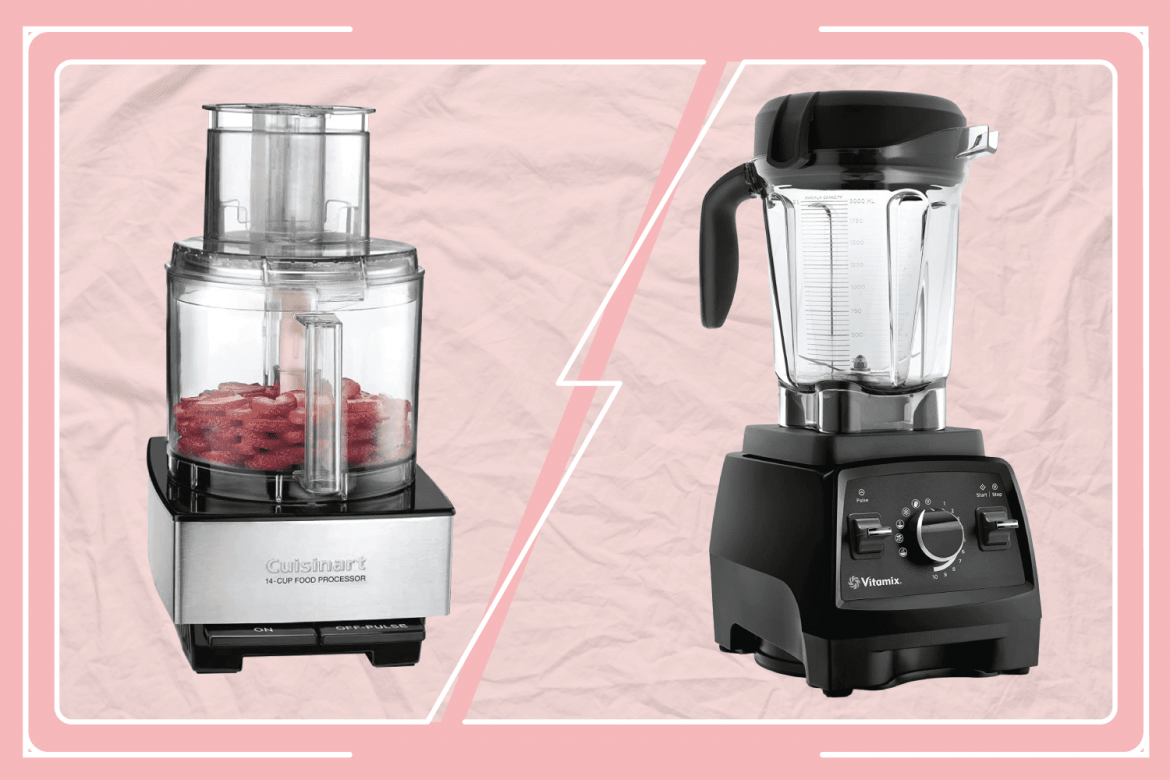When it comes to kitchen gadgets, few cause as much confusion as the blender and the food processor. At first glance, they look similar: both have blades, both plug in, and both promise to make meal prep easier. But here’s the catch: they’re designed for very different jobs. Knowing when to use a blender versus a food processor can save you time, improve your results, and even keep you from ruining a recipe.
We’ve broken down the differences to help you decide which tool belongs in your kitchen.
Understanding the basics
While blenders and food processors serve similar purposes, they work in different ways. Both pieces of equipment are super versatile in the kitchen, but they are suited to certain techniques and not others. If you want to make the best of both (and ramp up your meal prep skills), knowing which equipment works best for certain techniques will get you there.
Blenders
You get three main types of blenders: countertop, immersion, and personal blenders. The best blenders have sharp, stainless-steel blades and a strong motor of at least 1,000 watts. This ensures that your next slushy or cocktail can be made without the motor burning out. It should also come with varying speeds and programmes. The different speeds allow you to create the exact texture you’re after while you’re blending, while programmes, like pulse, ensure consistent results.
The type of blender you choose to buy really depends on your cooking preferences:
- Countertop blender: A “full-size” blender with a large pitcher (that can take up to 4 or 8 cups) with a powerful motor; best used for large quantities of pureeing smoothies, shakes, soups, sauces, and crushed ice
- Immersion blenders: Also known as a stick blender, are a handheld wand you dip directly into a bowl/pot/pitcher; they are compact blenders ideal for single servings or hot liquids, however, they aren’t as powerful as countertop blenders
- Personal blenders: These are single-serve blenders, usually with a small cup that doubles up as a travel bottle; best used for small quantities of smoothies, shakes, dressings, dips, etc.. However, they have limited capacity and will struggle with large quantities
Food processors
There are a few different types of food processors: mini food processors, standalone or countertop food processors, and the attachments you can add to a blender or stand mixer. Whichever is your preferred choice, food processors are a lot bulkier than blenders, but are way more versatile in terms of food prep. With a standard motorised base that produces variable speeds and pulses, food processors have attachments that blenders don’t.
You typically have a choice between an S-shaped blade, a whisk, and extra attachments that can shred, slice, or spiral-cut ingredients. Unlike a blender, which excels with liquids, food processors are preferred for dry foods, create thicker textures, and make meal prep a dream.
Pros and cons of each
Blender
- Pros: ideal for smoothies, soups, and sauces; creates silky textures, easy to clean up
- Cons: struggles with solid foods, less versatile
Food processor
- Pros: versatile (chop, shred, knead, blend), handles solid foods
- Cons: bulky, harder to clean, doesn’t blend liquids as smoothly as blenders
Common uses for each
- Smoothies, shakes, and juices: use your blender
- Dips (think pesto, hummus, and salsas): You can use either, but keep note that blenders make smoother dips, and food processors give you more options
- Soups: Use blenders for a smoother soup texture, and food processors for a chunkier texture
- Baking prep: Like doughs, crusts, and icings, consider using food processors to avoid a sticky, gloopy mess
- Nut butters and spreads: Best made in food processors, since nut butters are made in smaller batches (a blender will struggle with smaller batches)
- Baby food prep: To get that ultra-fine texture, use blenders
Choosing between a blender and a food processor doesn’t have to be overwhelming; it all comes down to your cooking style. If you work with a lot of liquids, like making smoothies and soups, the blender is your best bet. If you’re chopping up a storm and need precision equipment, a food processor is your best friend. Or, if you can, have both handy to tackle a full range of dishes.

